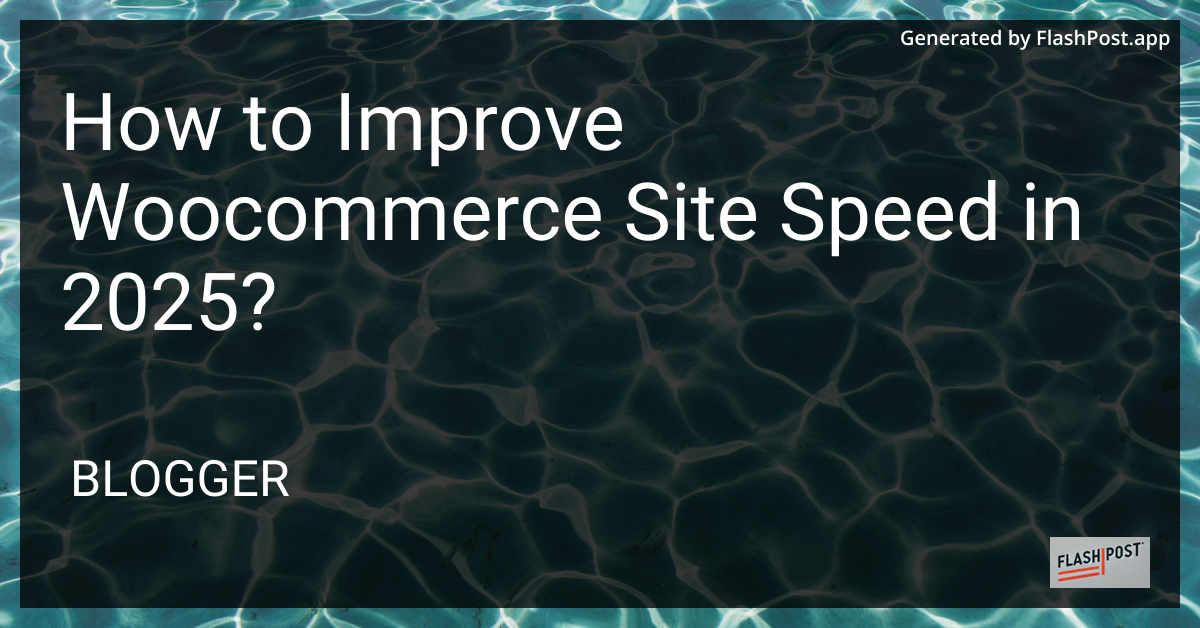How to Improve Woocommerce Site Speed in 2025?

How to Improve WooCommerce Site Speed in 2025
In 2025, optimizing your WooCommerce site speed remains crucial for ensuring a seamless shopping experience and improving your site’s SEO performance. As website speed becomes a more pivotal factor in search engine rankings, it’s essential to stay updated with the latest techniques and strategies. Here’s how you can enhance the speed of your WooCommerce site efficiently.
1. Choose a Fast and Reliable Hosting Provider
Your hosting provider plays a crucial role in site speed. Opt for hosting services that specialize in WooCommerce or offer managed WordPress hosting. Look for features like SSD storage, CDN integration, and caching solutions to boost performance.
2. Utilize a Content Delivery Network (CDN)
A CDN can significantly reduce loading times by serving your website’s static files from servers closest to the user’s location. This reduces latency and ensures faster delivery of content, especially for international customers.
3. Optimize Images and Media
Images often represent the largest portion of a webpage’s loading time. Use image optimization plugins like Smush or Imagify to compress and optimize images without losing quality. Consider adopting next-gen formats like WebP for even better performance.
4. Implement Caching
Enable caching to store parts of your site in fast-access memory, reducing the time it takes to load pages for repeat visitors. Tools like WP Rocket or W3 Total Cache can help you manage cache efficiently.
5. Minimize and Defer JavaScript
Too much JavaScript can slow down your website. Minimize and defer non-essential JavaScript files, ensuring critical scripts load first. Plugins or manual coding can help manage this process.
6. Optimize CSS
Keep your CSS lean by removing unused styles and minifying the code. Consider utilizing a tool like Autoptimize to handle CSS optimizations automatically.
7. Limit Plugins and Ensure Compatibility
Each plugin adds extra load time to your site. Regularly audit your plugins to ensure they are necessary and delete those that are not in use. Ensure all plugins are updated and compatible with the latest WooCommerce and WordPress versions.
8. Choose a Lightweight Theme
Your theme greatly affects site speed. Opt for themes known for their performance, preferably those optimized for WooCommerce. Lightweight themes reduce unnecessary complexity and enhance loading times.
9. Monitor and Analyze Performance
Regularly monitor your website’s performance using tools like Google PageSpeed Insights, GTmetrix, or Pingdom. These tools provide insights into what’s slowing your site down and offer actionable recommendations for improvement.
10. Regularly Update Your WooCommerce Store
Keep your WooCommerce, WordPress, theme, and plugins updated to ensure optimal performance. Updates often include performance improvements and security patches.
Additional Resources
For more in-depth WooCommerce customization tips, explore resources on how to override an AJAX function in WooCommerce, learn about WooCommerce custom fields, and delve into WooCommerce product page SEO.
By implementing these strategies, you can significantly improve the speed of your WooCommerce site in 2025, ensuring a better user experience and enhancing your website’s search engine ranking.
Comments
Post a Comment